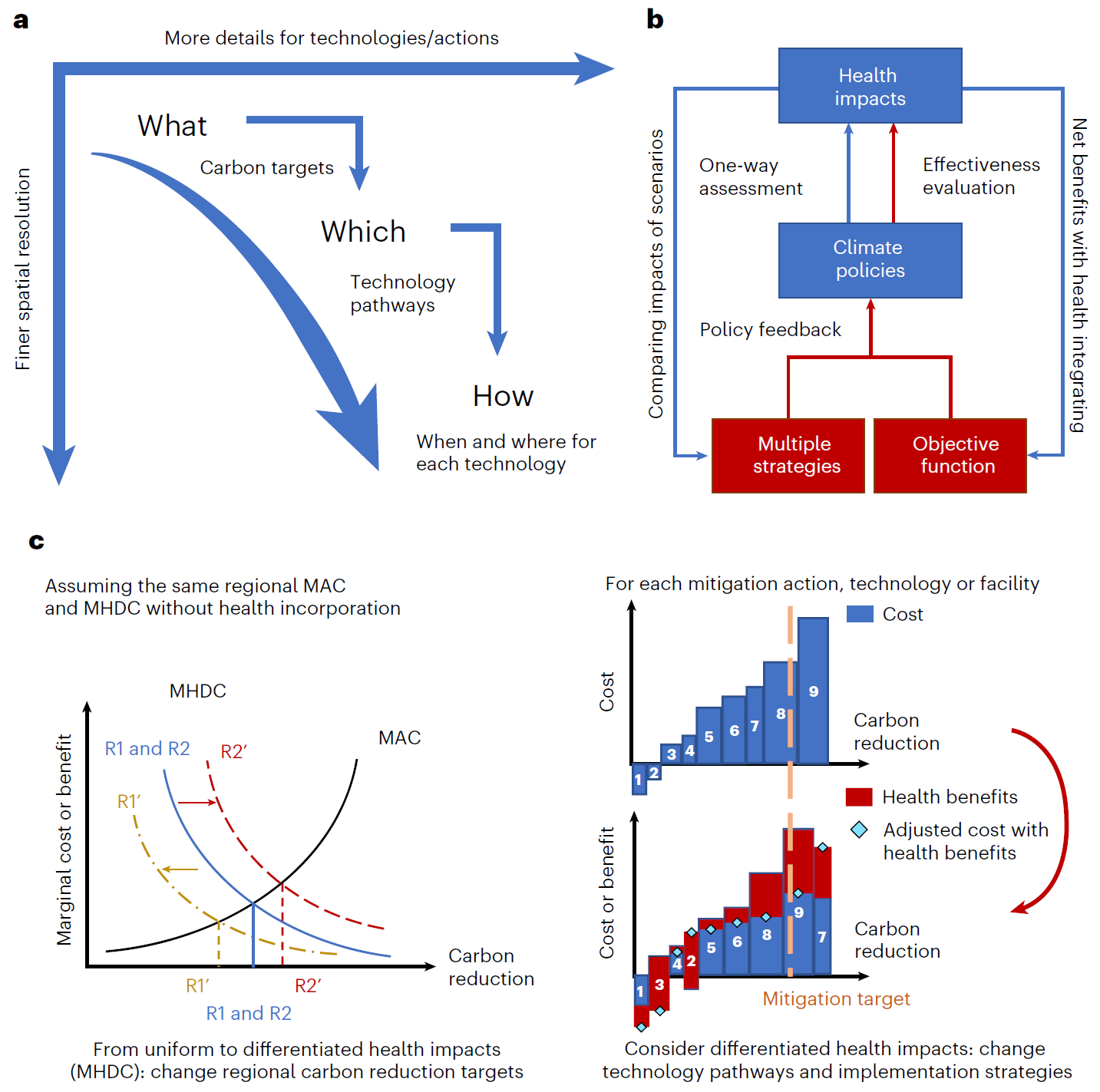Mitigating climate change can enhance public health by reducing air pollution emissions, promoting green travel, and adjusting healthy dietary structures, which will provide stronger incentives for carrying out climate actions. The COP28 UAE Declaration on Climate and Health calls for formulating and implementing carbon emission reduction policies that maximize health co-benefits. Therefore, it is highly necessary to systematically assess the costs, health co-benefits, and cost-effectiveness of carbon emission reduction actions, which can also support countries in systematically integrating health benefits when setting nationally determined contribution targets.
Although the health co-benefits of climate policies have become a consensus in the academic community, the current global climate policy framework still generally lacks consideration of the health dimension. This study systematically reviews the quantitative results of cost-benefit analysis (CBA) at the global and regional levels, and proposes a reference path for decision-making transformation bottlenecks.
The study finds that globally, every 1 yuan invested in emission reduction costs can generate RMB 1.10-2.45 yuan in health economic benefits, but regional differences are significant (up to 40 times). Implementing climate policies in regions with dense populations and poor air quality (such as India) brings particularly prominent health returns. Conclusions across studies vary, considering factors such as temporal and spatial resolution, policies, and health impacts.
Current CBA studies considering health face four bottlenecks in decision-making transformation: (1) The monetization method of health impacts (such as incidence/mortality) is incompatible with the real economic decision-making system; (2) There is a mismatch in time and subjects between emission reduction costs and health co-benefits (i.e., the bearers of costs and the recipients of benefits); (3) Insufficient regional studies; (4) Lack of research directly guiding climate policy formulation and actions.

Figure Conceptual framework for optimizing health-considered mitigation pathways.
The study suggests that future climate policies and health impact assessments can be improved in the following aspects: (1) In real economic decision-making, it is necessary to comprehensively consider "visible and tangible" health benefits; (2) Establish interdisciplinary collaboration mechanisms and multi-sector linkage platforms to better address the mismatch in time and subjects between cost investment and health benefit output, and the many challenges it imposes on cross-sector management; (3) Strengthen regional studies and improve comparability between studies; (4) Embed health impacts in research on climate target allocation, technology pathway selection, and implementation strategies, and optimize policy formulation. Future CBA analysis studies considering health can provide more explicit decision-making suggestions and accelerate the implementation of mitigation actions with maximum health co-benefits.
Related research results were published online in Nature Climate Change on June 5, 2025, under the title "Improving cost-benefit analyses for health-considered climate mitigation policymaking".
Shen Jianxiang, a doctoral student from Tsinghua DESS, is the first author of the paper, and Professor Cai Wenjia is the corresponding author. Co-authors include Assistant Professor Zhang Shihui from Renmin University of China, Postdoctoral Fellow Zhao Mengzhen from Beijing Institute of Technology, Professor Zhang Chi, and Professor Wang Can from the School of Environment at Tsinghua University. This study was supported by the National Natural Science Foundation of China.